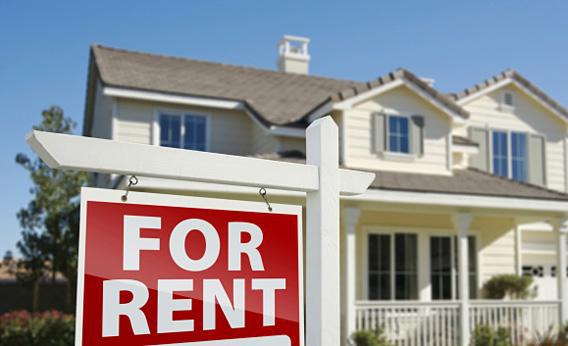There are two housing markets in the United States: the owner-occupied market and the rental market. Since most people live in houses they own and since renters are disproportionately poor and young, media coverage tends to treat the market for owner-occupied housing as “the” housing market. But the rental market is still a big piece of the overall economy, and unlike the owner-occupied housing market, it’s primed for a boom.
Let’s start with the basic facts. National average rents are way up from their recession lows. At the same time, prices for owner-occupied housing have been basically stagnant for years after plunging when the bubble popped. As a result, the purchase-price to rent ratio has fallen about as low as it ever gets. In other words, home prices are relatively cheap, and rents are relatively expensive. Given that and given current low interest rates, the implication is clear: If you’re a renter with a stable job and a good credit score, you should consider buying a house or condo.
On the other hand, owning is risky. If the value of your house goes up, you make money, but if it goes down, you may end up owing the bank more money than your place is worth. Bad news. And housing risk is in some ways a especially bad kind of risk to have. Whether you buy or rent, you’re exposed to general risks afflicting the local economy of the city where you live. If the oil and gas industry faces some structural decline, almost every single person in the Houston area will suffer—even if they don’t work in the industry. Restaurants and hotels will have fewer customers, school districts will have less revenue, and car dealerships will sell cheaper, less profitable models. When you own the house you live in, you double down on Houston risk. From a pure investment standpoint, the smart thing for a Houstonite to do would be to buy a house in Minneapolis, which is far away and has a totally different local economy.
During the boom years, people tended to be blind to housing risks. Banks even convinced themselves that securitization innovations had made it possible for them to safely lend to riskier borrowers. Today it’s just the reverse. So many people have been burned, that the public as a whole is risk-averse. Banks only want to lend to the safest borrowers—precisely the kind of people who are currently shying away from buying.
But people don’t vanish just because they don’t want to buy a house. The collapse in house-building since 2006 has been massive. Meanwhile, the population has kept on growing. The only reason we have enough space for everyone to live in is that so many broke young people are living with their parents. According to a recent Goldman Sachs analytic note, during the past four years, America has added 2.7 million “shadow” households—young people living with parents or siblings who under normal conditions we’d expect to be heading their own households.
The cause of this decline in household formation isn’t mysterious: It’s the joblessness, stupid. But now that the economy’s back to creating jobs, people are going to want to get places of their own.
That’s going to mean even more demand for rental apartments at a time when vacancy rates are at their lowest level since the dot-com era. During ’90s and aughts, we consistently built fewer buildings with five units or more than were normal in the ’70s and ’80s. The country has been on a decades-long drought of large-apartment-building construction. We’re now facing a perfect storm of demand, thanks to a growing population of empty nesters with busted 401(k)s looking to downsize and the huge backlog of twentysomethings who still need their first place.
How to relieve this shortage? One possible solution is the Federal Housing Finance Agency’s new initiative to try to bundle and resell foreclosed homes as rental properties. It’s a good idea, but it has two flaws. One is that it’s not a coincidence that we normally associate renting with larger structures rather than single-family homes. The logistics of landlording are much better in multi-unit buildings. The second is that the biggest gluts of foreclosed properties aren’t where the demand for living space is. New rental housing in Phoenix, Las Vegas, or Tampa doesn’t help relieve the razor-thin vacancy rates in New York, Portland, Minneapolis, or San Jose. Only new construction will help. That’s good news for owners of existing apartments and for investors in the firms that can build new ones. Unfortunately, intrusive anti-density regulations will make it difficult to build as much or as quickly as there’s market demand for. Mayors looking to boost their local economies should move to deregulate and unleash the pent-up demand.
But even under optimal public policy, there’s no getting around the fact that apartment construction takes time. For the short term, that means rents are only going to go higher—inflicting serious pain on the poor, on young people, and on those whose credit history locks them out of the mortgage market.
